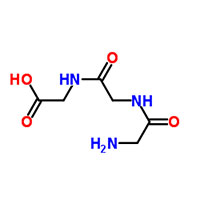Product Description
Introduction:
Triglycerides are essential chemical compounds with various applications in the chemical industry. This
product introduction aims to provide an overview of triglycerides, covering their raw materials,
production process, market trends, and the current status of amino acids in the industry.
Raw Materials:
Triglycerides are synthesized using glycerol and fatty acids as the primary raw materials. Glycerol,
derived from natural sources like vegetable oils or animal fats, is esterified with fatty acids to form
triglycerides.
Production Process:
The production process of triglycerides involves the following steps:
Step 1: Esterification - Glycerol and fatty acids are subjected to esterification reactions using
catalysts or enzymes. This reaction results in the formation of triglycerides, with each glycerol
molecule esterified with three fatty acid chains.
Step 2: Purification - The resulting triglycerides are purified to remove impurities and obtain the
desired level of purity. Purification techniques may include filtration, distillation, or
chromatography.
Market Trends:
The market demand for triglycerides has been growing due to their wide range of applications across
various industries. Here are some key market trends:
Food and Beverage: Triglycerides are used as cooking oils, frying fats, and ingredients in food
products. They provide texture, taste, and nutritional value to food items. The demand for healthier and
sustainable fats has driven the market for triglycerides derived from plant-based sources.
Cosmetics and Personal Care: Triglycerides find applications in the cosmetics and personal care
industry. They are used in skincare products, moisturizers, and hair care formulations to provide
emollient properties, improve texture, and enhance product stability.
Current Status of Triglycerides:
Triglycerides are an integral part of lipids, which play essential roles in the human body. They serve
as a concentrated energy source, provide insulation and protection to vital organs, and act as carriers
for fat-soluble vitamins. Triglycerides derived from vegetable oils are increasingly favored due to
their favorable fatty acid profile and sustainability aspects.
Conclusion:
Triglycerides, synthesized through the esterification of glycerol and fatty acids, are valuable
compounds in the chemical industry. Their production involves the esterification of the raw materials
followed by purification. Triglycerides have significant applications in the food and beverage,
cosmetics, and personal care industries. They are derived from natural sources and contribute to
advancements in sustainable and healthier product formulations.





